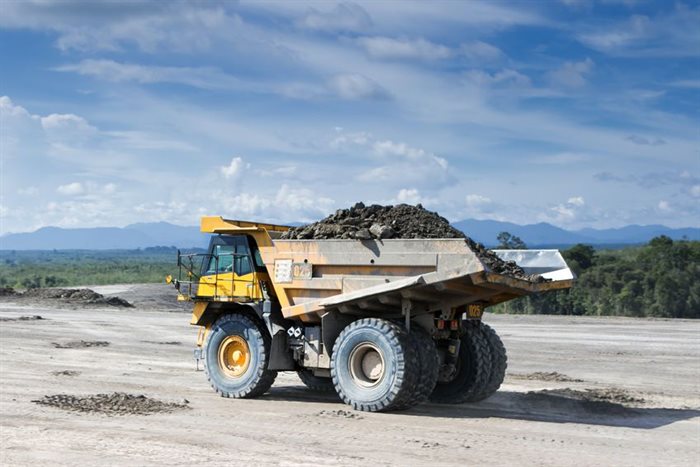Leveraging AfCFTA for a thriving African mining industry

The continent is a large supplier of bauxite, chromium, cobalt, copper, diamond, gold, iron ore, platinum group metals, lithium, rare earth metals and zinc, for example, with most of them being exported as ores, concentrates or metals.
Exporting these critical minerals as raw materials, however, reduces Africa's trading position to one of price taker, and subjects the continent's mining sector to changes in global commodity markets. Adding to these challenges, the current disruptions in global supply chains are hampering the trade of these commodities in Africa, with mining companies now subject to long delays and higher costs.
This high level of global and economic uncertainty has the added effect of holding back investment in new mining projects, placing more obstacles in the way of a continent that desperately needs to be able to capitalise on its vast mineral resource base.
Addressing infrastructure gaps, boosting manufacturing capacity
Enter the African Continental Free Trade Area (AfCFTA) — implemented in 2021, it is intended to act as a strong impetus for African governments to address their infrastructure gaps, boost their manufacturing capacity, streamline their supply chains, and overhaul regulation relating to trade, cross-border initiatives, investment-friendly policies and capital flows.
The trade in mineral commodities in Africa is expected to benefit from these reforms, but the extensive infrastructure development that is needed to facilitate the movement of goods across borders will clearly take time.
Projects are already in progress to boost continent-wide infrastructure needs. For example, Tanzania's construction of the Standard Gauge Railway (SGR) Project is expected to provide a safe and reliable means for efficiently transporting people and cargo to and from the existing Dar es Salaam port. Other large projects underway include the Trans-Maghreb Highway in North Africa, the North-South Multimodal Corridor, the Central Corridor project and the Abidjan-Lagos Corridor Highway project.
Investment in transport and logistics
According to the World Economic Forum's (WEF) latest report — AfCFTA: A New Era for Global Business and Investment in Africa — investment in transport and logistics will be crucial to enable the trade of goods in Africa, including in the mining sector. The report notes that AfCFTA is expected to increase trade demand by 28%, which will lead to a requirement for "2 million trucks, 100,000 rail wagons, 250 aircraft and more than 100 vessels by 2030".
To assist with much-needed investment in the sector, the WEF notes in its report that it is actively working with the AfCFTA Secretariat on trade and investment tools that align with the AfCFTA negotiation process. The tools are intended to identify areas "where public-private collaboration can help reduce barriers and facilitate investment from international firms".
The report goes on to say that "public-private collaboration can help remove obstacles in the supply chain, improve cross-border payments and access to trade finance, reduce the costs and delays of moving goods across borders, help to mainstream environmental sustainability, and tackle barriers to investment entry and expansion".
Africa Mining Vision
The intended advantages of these new tools are aligned with the goals of the Africa Mining Vision (AMV), which was adopted by African Union heads of state in 2009. One of the aims of the AMV is the "transparent, equitable and optimal exploitation of mineral resources to underpin broad-based sustainable growth and socioeconomic development".
Also listed as intended goals of the AMV are the need to facilitate and nurture human resources and skills, provide supporting infrastructure, encourage instruments of collaboration, promote local beneficiation and value addition of minerals, establish an industrial base, ensure cross-border compliance with corporate governance and ESG, and establish enabling markets and platforms for services, such as capital raising, commodity exchanges, and legal and regulatory support.
In order for the AMV to be successful, Africa's countries and its regional bodies must implement integrated resource-based development and industrialisation policies that take into account operations that benefit local workers and the communities, and that produce results that are net positive for the region. Also essential is the ability of African nations to be able to successfully negotiate with global mining companies and stipulate the importance of local inputs.
Regionally, mining legislation must be integrated with the continent's industrial and trade policies. One of the intended end results of these policies is that African countries will be able to launch more lucrative value-addition industries that are involved in the final product manufacturing of raw minerals.
Opportunity to diversify African economies
Recent Baker McKenzie research, compiled in conjunction with Oxford Economics, AfCFTA: A Three Trillion Dollar Opportunity, revealed that over three-quarters of African exports to the rest of the world were currently heavily focused on natural resources, primarily raw materials. According to this report, manufacturing GDP represents on average only 10% of GDP in Africa. This means that limited production capabilities within Africa are currently being compensated for through foreign imports. This manufacturing deficit is intended to be eventually satisfied within the continent and enabled by AfCFTA.
AfCFTA is providing the opportunity for African countries to diversify their economies, scale up production capacity, improve their trade in services, and widen the range of final products made in Africa. Closer integration of neighbouring economies is also a potential avenue for creating scale and competitiveness through domestic market enlargement, thereby promoting development through greater efficiency. This relates to both intra-regional trade and trade with non-African nations.
Taking a longer view, regional trade cooperation could potentially become a successful bridge for connecting the region's wealthier and poorer nations, promoting the growth of value chains and laying the foundations for increased international exports of the continent's resources and its manufactured products. According to goals of the AfCFTA and the AMV, the key beneficiaries of improved manufacturing and trade across the continent is intended to be Africa and its citizens.

About Virusha Subban
Virusha is a partner and head of Tax in Baker McKenzie's Tax Practice Group in Johannesburg. She has over 20 years' experience in tax matters relating to customs, excise and international trade.Related
AfCFTA’s primary task must be to boost intra-African exports to levels experienced by other global trading blocs 4 Oct 2024 Afreximbank Q1 2024: Resilience amid challenges, income surges 20 May 2024 No more business-as-usual in African capital markets 22 Mar 2024 South Africa celebrates first AfCFTA export to Ghana amidst global trade disruptions 28 Feb 2024 Absa aims to harness Chinese corporate Africa push 1 Feb 2024 #BizTrends2024: Africa's growing role in global trade dynamics 8 Jan 2024 Electric Vehicles White Paper: Tax incentives, climate goals to drive EV industry 13 Dec 2023 Africa’s new online foreign exchange system will enable payments in local currencies – what you need to know 5 Dec 2023





